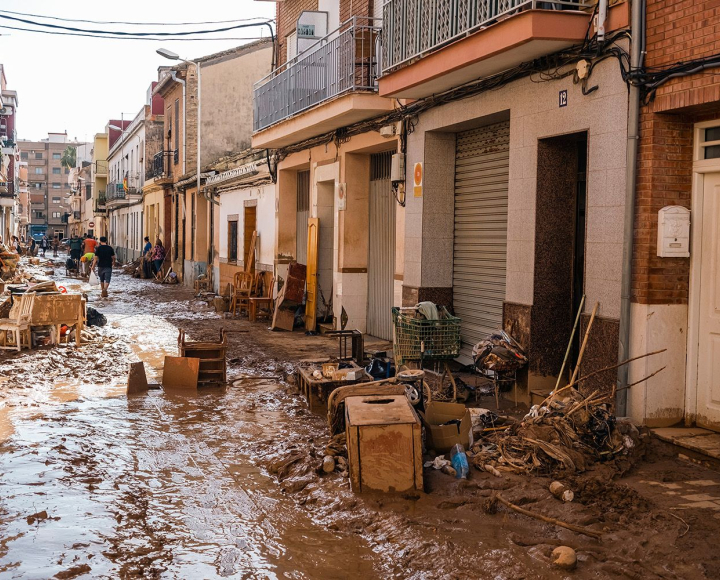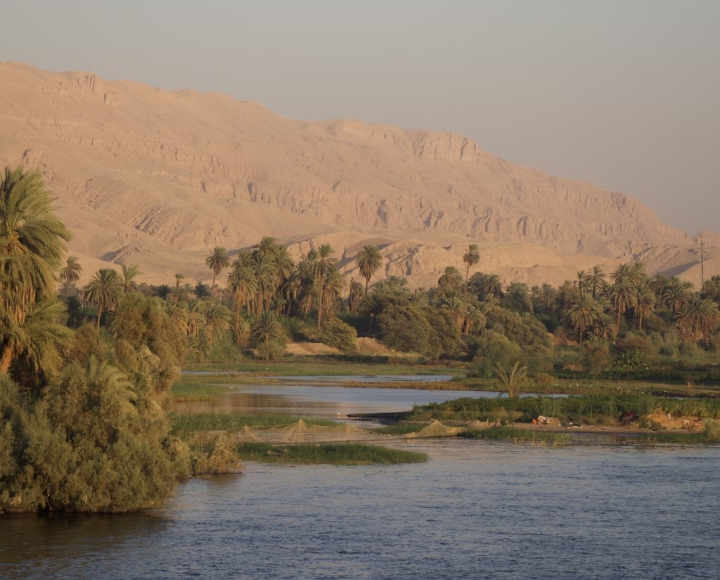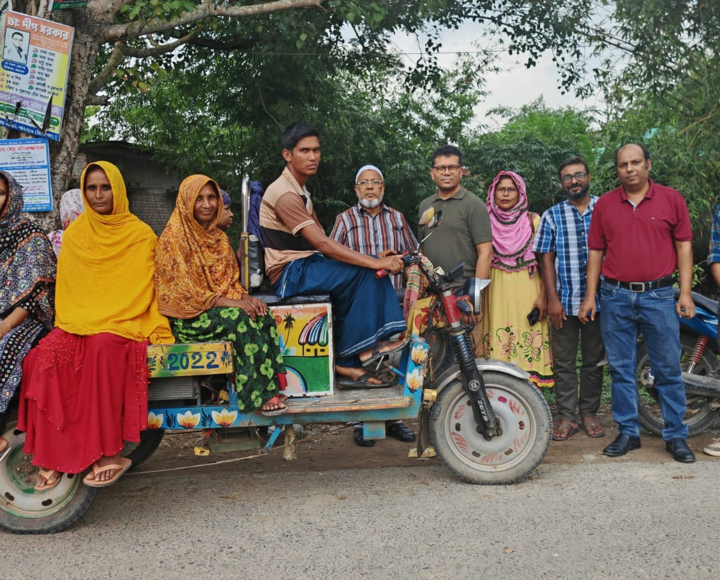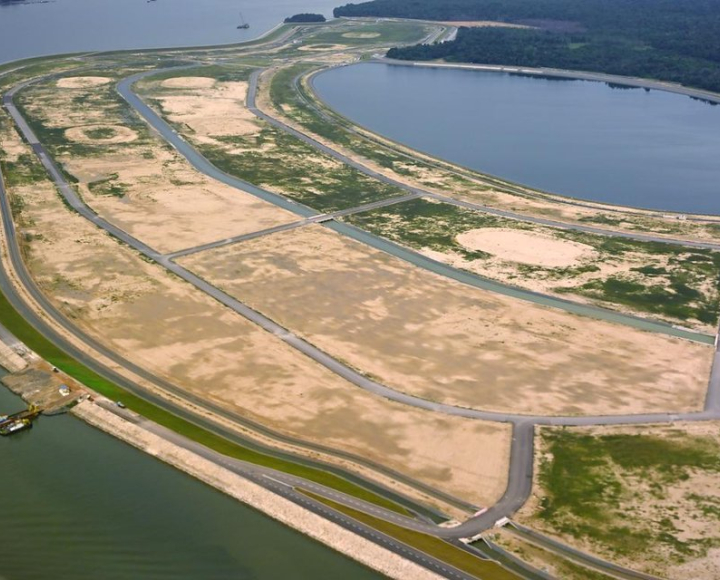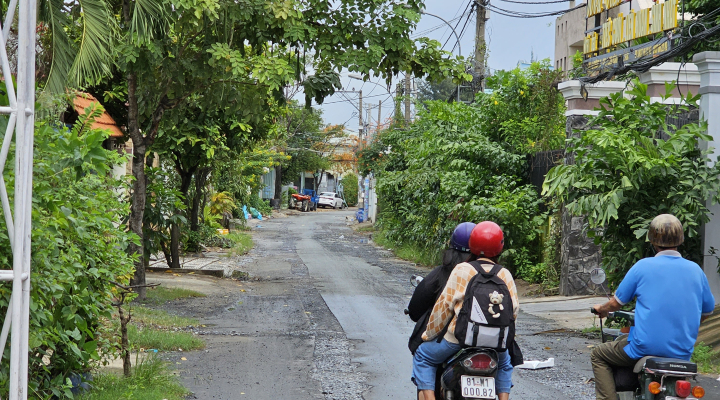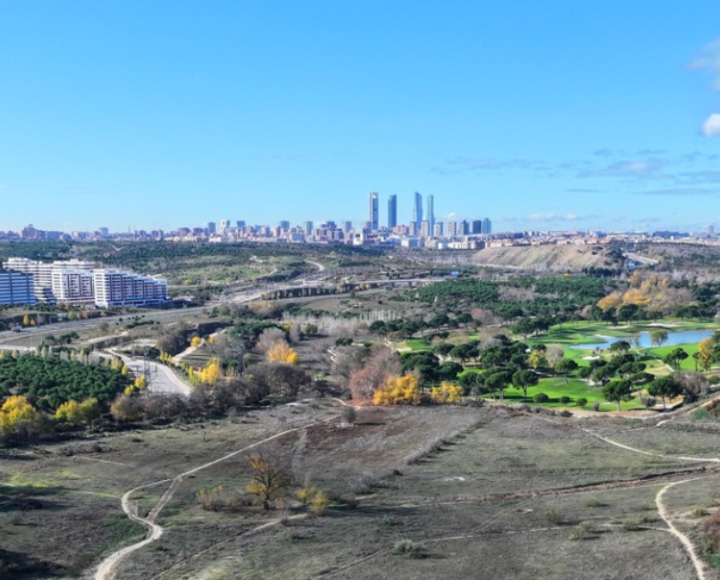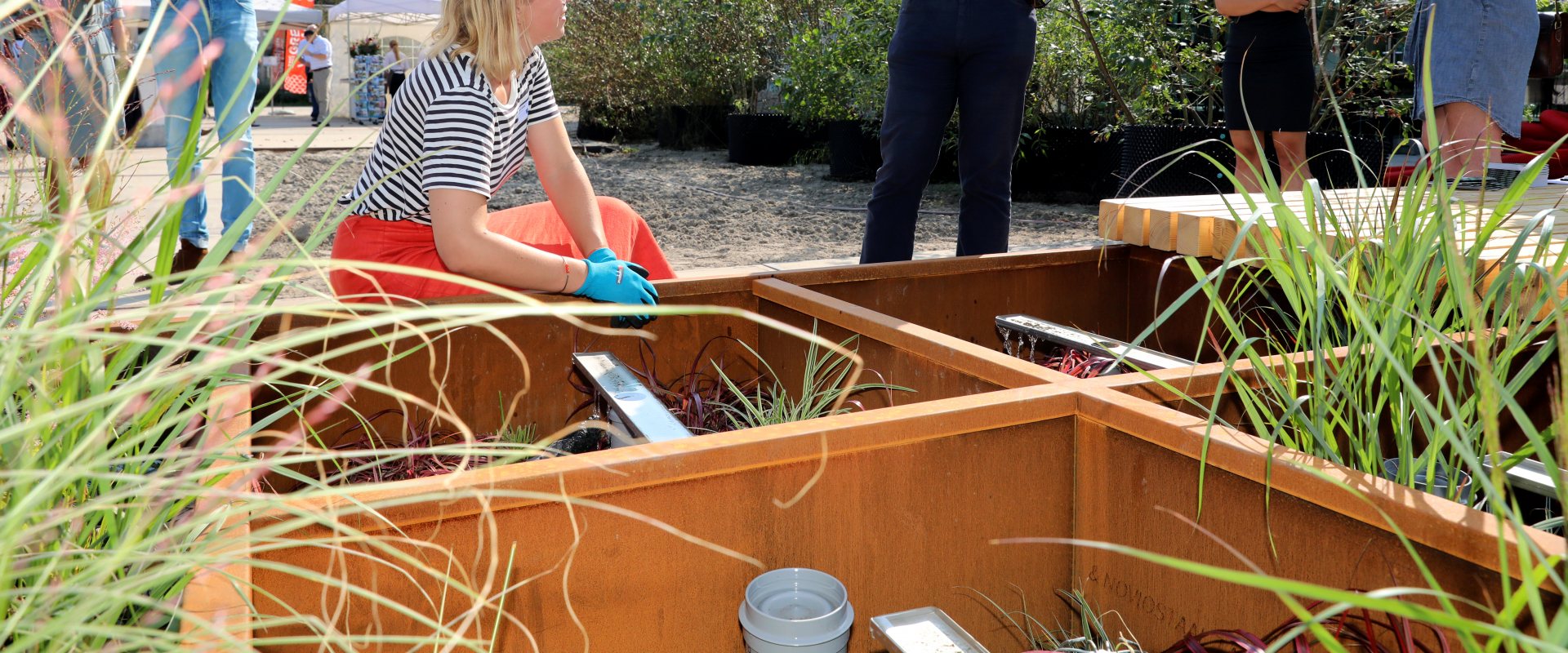
Living lab for urban solutions to bridge floods and droughts
The Green Village, a testing ground at Delft University of Technology, launched a field lab for new urban solutions that tackle both too much and too little water.
The new facility, called 'Hitteplein' (heat square), starts with six SME companies that will further improve their solutions, not only technically but also on aspects of marketing and on making their customers, often municipalities, more open minded for their combined solutions.
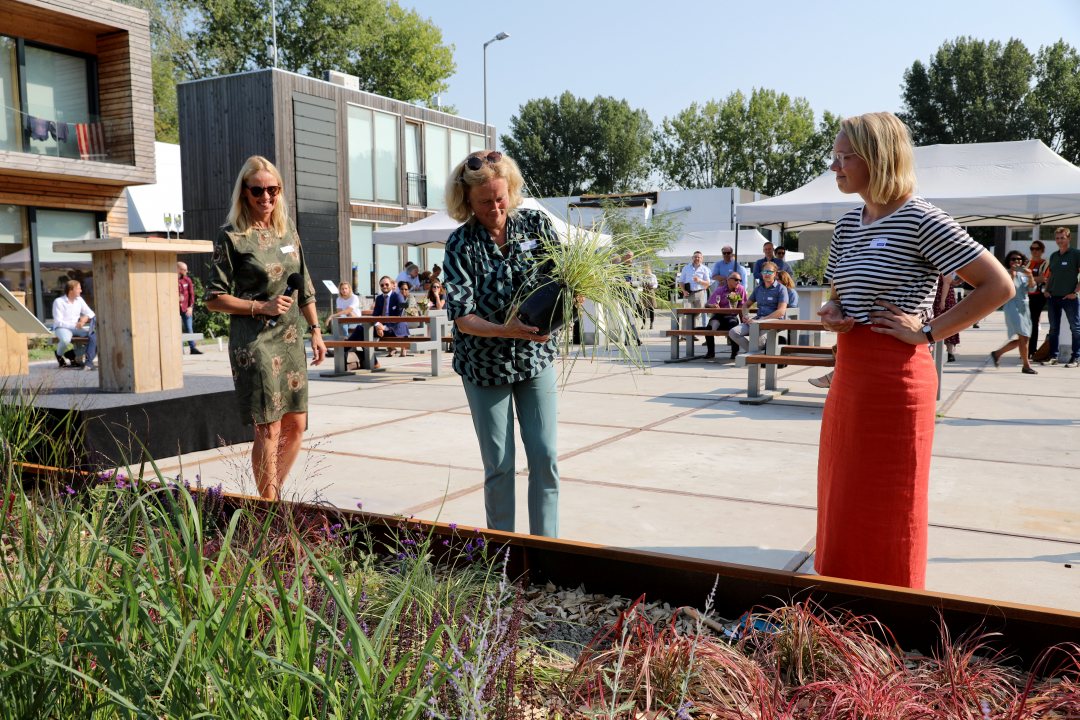

Alternating extremes
All cities in the world cope with the same water problems. Increasing floods because of heavier rain fall, expanding hard surfaces and only limited drainage capacity. At the same time cities face more intense dry periods with too little water for their fountains and green spaces to keep the city cool.
The Green Village platform started in 2018 to facilitate entrepreneurs to test and further improve their solutions to buffer excessive rain water at street level to reduce flooding. Sixteen entrepreneurs, mainly with rain water infiltration technologies, have used the facility so far.
More water for urban green
‘Our next step is to have a testing ground for solutions that not only address the urban flooding, but also make the buffered water available to cool cities during heat waves,’ says director Marjan Kreijns of Green Village.
‘Summer heat and periods of prolonged drought are increasing much faster than expected, so it is important for cities to take proper measures. Our 'Hitteplein' testing ground makes it possible to introduce innovations faster’.
Kreijns invites all researchers, entrepreneurs, companies and governments with good ideas to join the field lab with an unit.
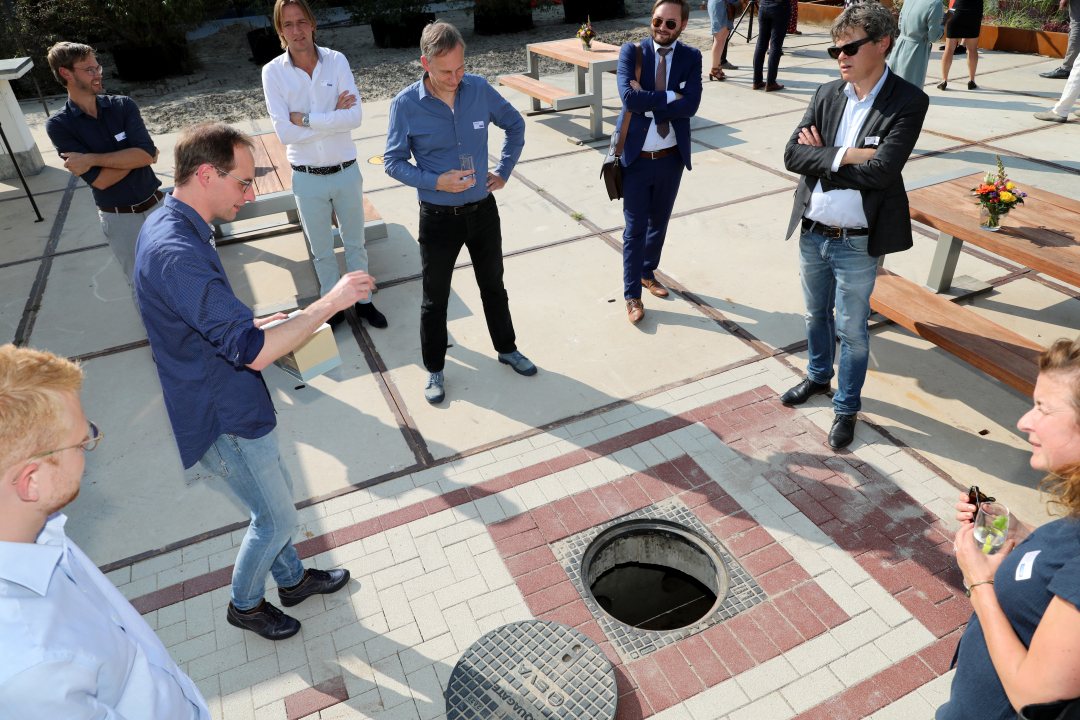

Cooling through evaporation
The evaporation of water cools a city during a heat wave. This occurs naturally through plants in green areas. However, more green spaces also increases the demand for water. One solution tested at the 'Hitteplein' is the Bluebloq by Field Factors. It collects rainwater, purifies it with a biofilter and stores it. As such, it adds storage capacity for downpours and by reusing the stored water during heat stress it adds to keeping cities cool.
Another option is to make the collected rainwater to evaporate more directly. This is the concept behind Rainroad developed by Movares. It collects the excessive rainwater in a reservoir under the sidewalk or a parking lot. When temperatures increase the water in the reservoir evaporates upwards to a compartment directly underneath the street pavement. The heat of the sun makes the water evaporate and thus is cooling the street.
Deputy Adri Bom-Lemstra of the province of Zuid-Holland who opened the new facility called upon city developers to incorporate these solutions from the start when building new housing areas. ‘Let’s get it right from the start’, Bom-Lermstra said. ‘Built them climate-proof, so people don't just have a place to live, but a place where they can live healthily and safely as well’.




